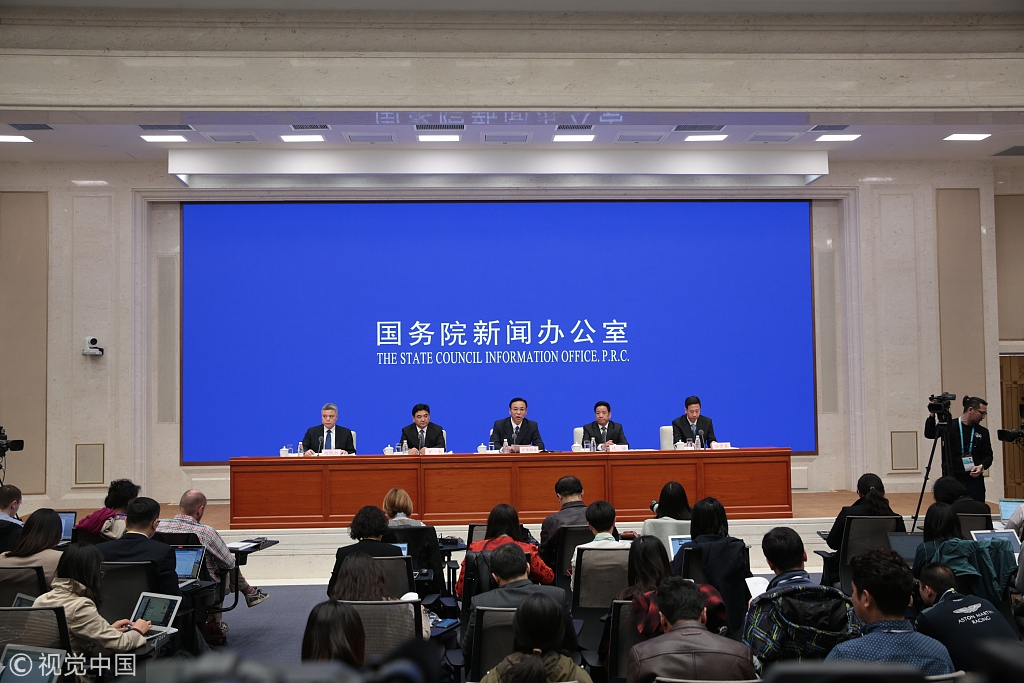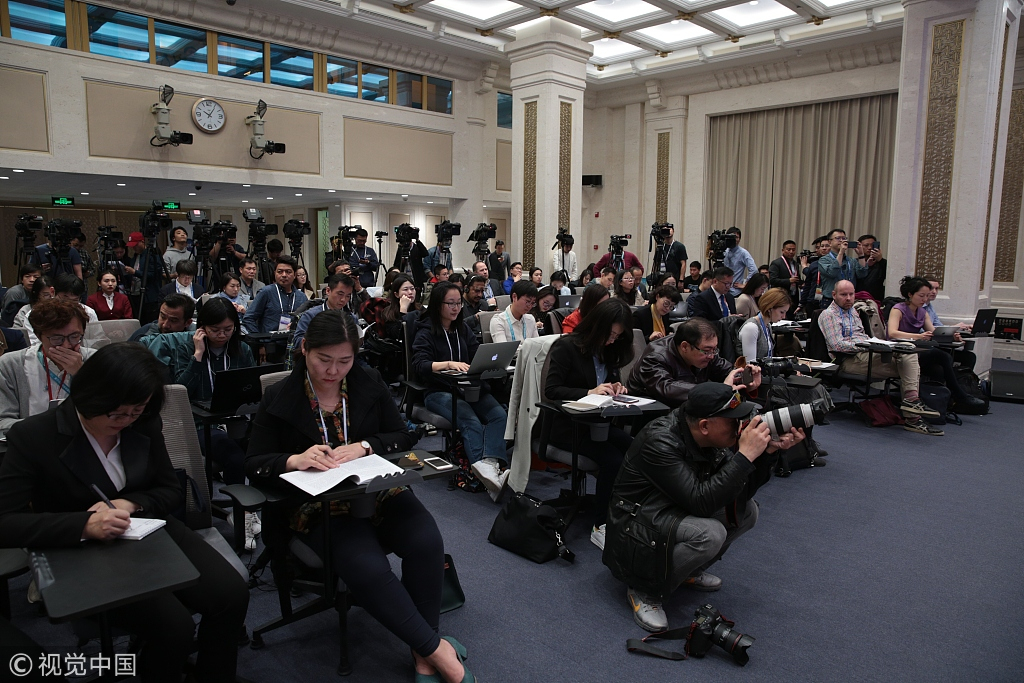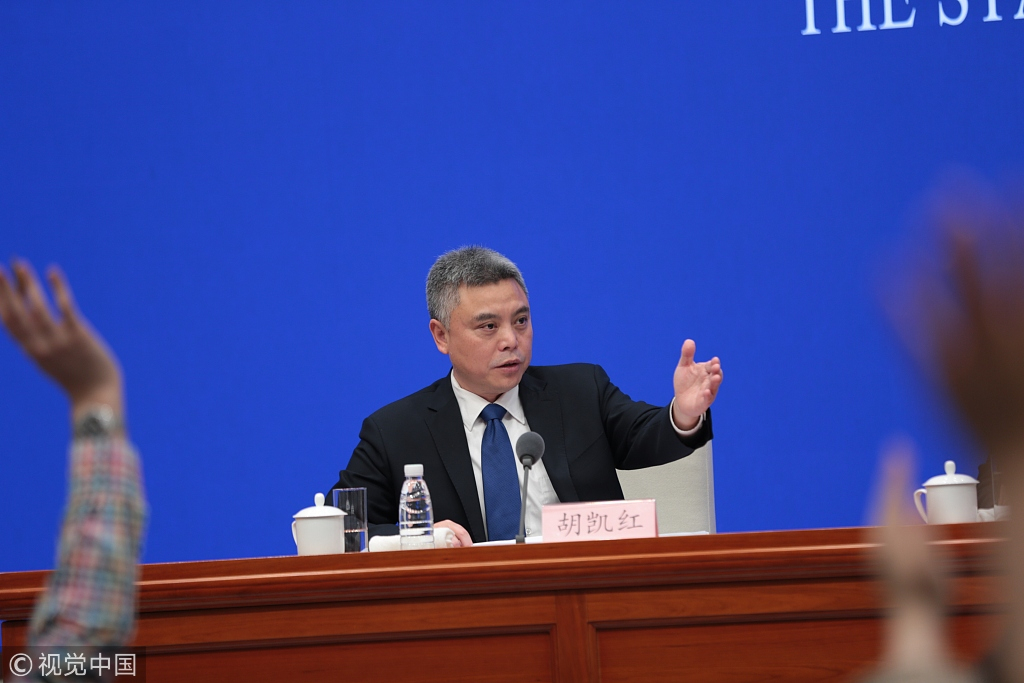
Opinion
18:55, 27-Mar-2019
Tibet racks up achievements since 1959
Updated
22:15, 27-Mar-2019
Wang Xiaobin

Editor's note: Wang Xiaobin is a research fellow of the contemporary institute from the China Tibetology Research Center. The article reflects the author's views, and not necessarily those of CGTN.
On Wednesday, the State Council Information Office released a white paper highlighting Tibet's achievements since its democratic reform 60 years ago.
For a long time, Tibet was praised as a paradise on Earth for its magical and magnificent natural scenery and rich and simple folk customs. In fact, in old Tibet, the living conditions of the majority of the people were extremely harsh.
Since 1959, especially since the reform and opening- up, the Communist Party of China (CPC)started to help and develop Tibet, and improving the people's livelihood has been an extremely important task. After the 18th National Congress of the CPC, the Chinese government has made unremitting efforts to continuously improve the people's welfare in the region.
Continue to promote employment
Since 2012, Tibet has made every effort to expand employment, expand employment channels and improve the quality of employment. From 2013 to 2017, nearly all college graduates in the region were employed year after year through public examinations. Through the mechanism of organization, vocational training, employment service and labor rights protection, a total of more than 4.35 million laborers in agricultural and pastoral areas have been transferred over the past five years.
At the same time, the Tibet region will implement and improve the policy of mass entrepreneurship and innovation, and encourage mass entrepreneurship and innovation through preferential financing, policies and technologies. After multiple efforts, the registered urban unemployment rate in the region has been maintained between 2.5 percent and 2.7 percent.

The State Council Information Office issued the white paper entitled "Democratic Reform in Tibet -- Sixty Years On." and held a press conference in Beijing, March 27, 2019. /VCG Photo
The State Council Information Office issued the white paper entitled "Democratic Reform in Tibet -- Sixty Years On." and held a press conference in Beijing, March 27, 2019. /VCG Photo
Develop education vigorously
For a long time, China has devoted a lot of efforts to the education of Tibet, hoping to create a brighter future for the snowy plateau. Since 2012, investment in education in Tibet has been increasing year by year, and the conditions and quality of education have been significantly improved.
By 2018, the district's gross enrollment rate for preschool education was 77.9 percent, up 25.92 percentage points from 2013. The retention rate in compulsory education was 93.9 percent, 3.9 percentage points higher than in 2015. The gross enrollment rate of senior high school students was 82.3 percent, 9.97 percentage points higher than that of 2013.
The gross enrollment rate of higher education was 39.2 percent, an increase of 11.49 percentage points over 2013. Great achievements have been made in the construction of higher education institutions. The college of Tibetan medicine was renamed the University of Tibetan medicine.
Continue to promote medical and health services
Most of Tibet is located in the alpine and anoxic areas, where the harsh natural conditions seriously affect the health of the people. Before 1951, there were only 1.14 million people and the average life expectancy was only 35.5 years. The health of people of all ethnic groups in Tibet is a major concern of the Communist Party of China, and a large amount of manpower and resources have been invested in promoting medical and health services.
Since 2012, the construction of a healthy Tibet has been continuously promoted, such as the screening and treatment of echinococcosis. As such, public services in the region are improving. By 2018, the per capita standard for basic public health services will be raised to 75 yuan.
In 2018, the coverage rate of Tibetan medicine in township hospitals will reach 89 percent. Thanks to long-term efforts, the average life expectancy in Tibet has increased to 68.2 years, and the population of Tibet has exceeded 3 million.

The State Council Information Office issued the white paper entitled "Democratic Reform in Tibet -- Sixty Years On." and held a press conference in Beijing, March 27, 2019. /VCG Photo
The State Council Information Office issued the white paper entitled "Democratic Reform in Tibet -- Sixty Years On." and held a press conference in Beijing, March 27, 2019. /VCG Photo
Continue to strengthen social security
By 2018, a total of 3.707 million people in the region have participated in various types of social insurance, an increase of 1.288 million people over 2013. The basic medical insurance system for both urban and rural residents will be fully covered.
The social security information platform has successfully connected the whole country with the Internet, and the medical system in agricultural and pastoral areas has preliminarily realized the instant settlement of medical treatment in different places across provinces.
The minimum wage will be 1,650 yuan per month and 16 yuan per hour. In 2017, the standard of subsistence allowance for urban residents was 700 yuan per person per month, 3,311 yuan per person per year for rural residents. The standard of social assistance has been steadily raised.
Insist on improving traffic conditions
There is a well-known saying in China: "If you want to be rich, you must first build roads." Before the democratic reform, Tibet did not have a road in a modern sense. Transportation was mainly by human or animal power. It took several days to get from Shigatse to Lhasa.
After decades of construction, Tibet's history of no high-grade highways or railways has completely ended. In 2013, the opening of the Metok highway marked the opening of roads in all counties in Tibet. By the end of 2018, a total of 68,800 kilometers of rural roads had been opened to traffic in Tibet, and 13,100 kilometers of newly upgraded rural roads had been built. 34 towns and 533 villages had been added to the total.
Persevere in the fight against poverty
Tibet is the only provincial-level contiguous poverty-stricken area in China. Over the years, the CPC has made great efforts to lead people of all ethnic groups in Tibet out of poverty. The central government has continued to combat poverty through a number of measures. Since 2012, on the basis of continuing to increase poverty alleviation efforts, more attention has been paid to the accuracy of poverty alleviation and efforts have been made to tackle deep poverty.

The State Council Information Office issued the white paper entitled "Democratic Reform in Tibet -- Sixty Years On." and held a press conference in Beijing, March 27, 2019. /VCG Photo
The State Council Information Office issued the white paper entitled "Democratic Reform in Tibet -- Sixty Years On." and held a press conference in Beijing, March 27, 2019. /VCG Photo
By 2018, Tibet had lifted more than 180,000 people out of poverty in 2,100 poor villages in 25 counties and districts. The incidence of poverty dropped from 28.8 percent to 7.9 percent. According to the plan formulated by TAR, by 2020, all of the 396,000 registered poor people in Tibet under the current standard will be lifted out of poverty, all the poverty-stricken villages will be withdrawn, and all the poverty-stricken counties (districts) will be removed, thus solving overall regional poverty.
(If you want to contribute and have specific expertise, please contact us at opinions@cgtn.com.)

SITEMAP
Copyright © 2018 CGTN. Beijing ICP prepared NO.16065310-3
Copyright © 2018 CGTN. Beijing ICP prepared NO.16065310-3